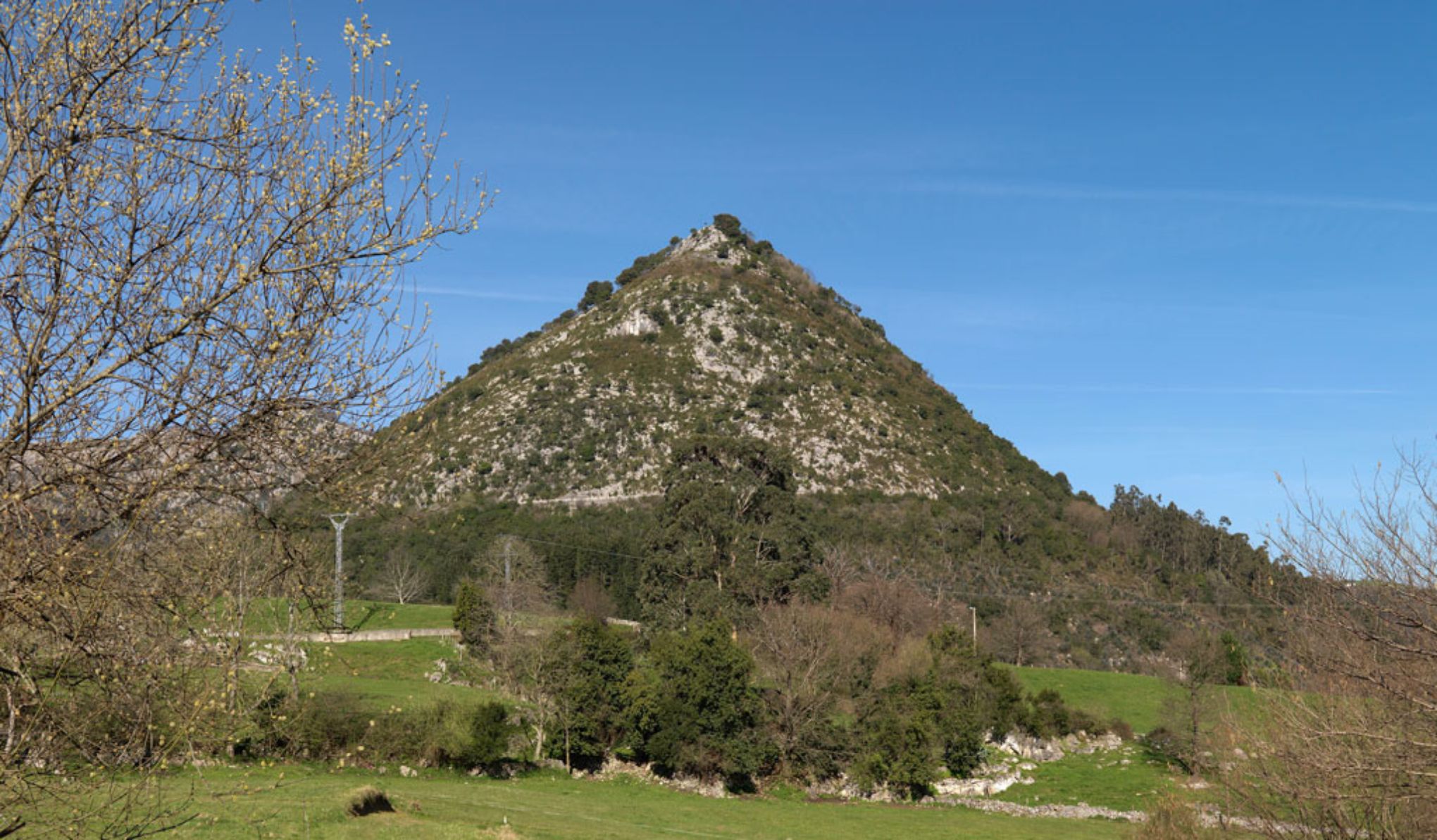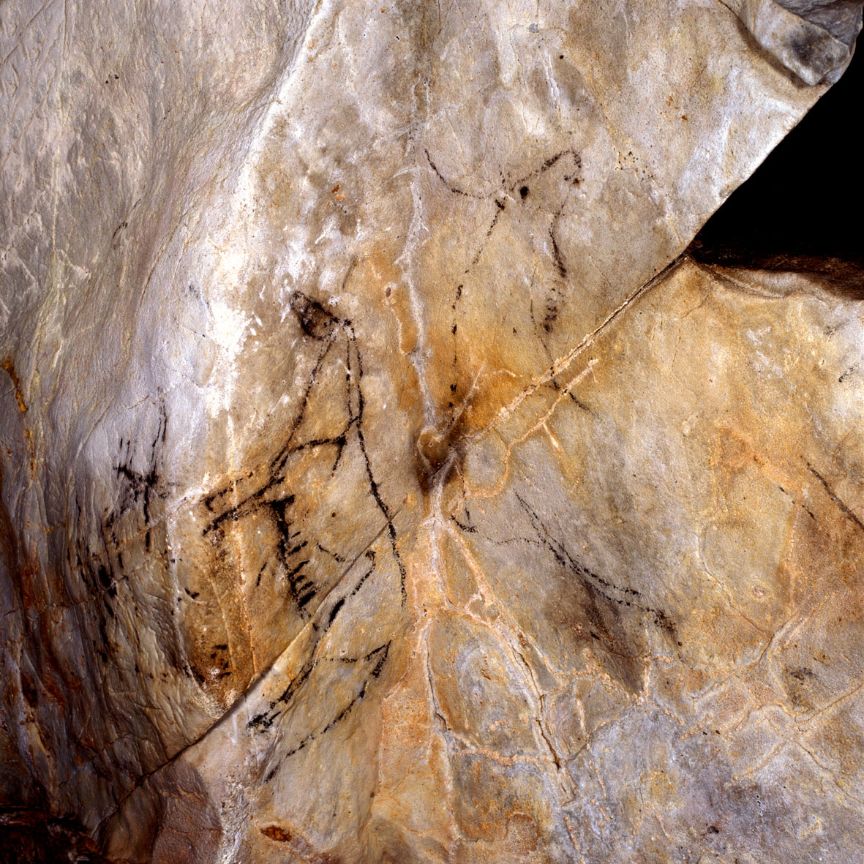Las Monedas Cave

Identification of the Property
SubirMonte Castillo, Puente Viesgo, Autonomous Community of Cantabria
Access
On the N-623 road, turn off in the centre of the town of Puente Viesgo, go past the central car park and take the road up the hill to Monte Castillo. This ends at the car park for visitors to the caves; from there walk up to reception and the interpretation centre.
Geographical coordinates
UTM 30T 421660E / 4793575N Z: 190
Description
SubirTopographic description
Monte Castillo is a conical limestone hill, forming the easternmost spur of Sierra del Escudo de Cabuérniga, a feature separating the coastal lowlands from the interior valleys in the west of Cantabria. It stands over the left bank of the River Pas, dominating a wide fluvial plain at the start of the “lower Pas Valley” and also the natural route from this valley to Besaya valley.
The present entrance to Las Monedas Cave is through a gate at the southern end of the cave. It enters a vestibule with a flat roof and compact clay floor. On the left, this is separated from the First Chamber by a mound of huge boulders partially covered with flowstone. The general N-S axis of the cave can now be seen, and the Second Chamber is reached by going round the top of a shaft. A side-passage to the east can also be reached from the vestibule by a narrow passage. The Gallery of the Paintings is on the western side of the two chambers and 3m above them. The Third Chamber, with a large shaft in its centre, is reached through a narrower passage. To the west, the Upper Chambers are some 3-5m above the rest of the cave. To the NW, the Fourth Chamber has a number of passages leading off it. The total length of the cave is 805m.
Date of Discovery
In the 1950s, work was carried out to improve access to the prehistoric caves already known on Monte Castillo (El Castillo and La Pasiega). When a horizontal path was cut round the side of the hill numerous fissures were uncovered, and in April 1952 the forest warden I. Blanco found the entrance to a cave he had known of since the 1920s. On 8th April, it was visited by F. Puente (head guide at El Castillo) and A. García Lorenzo. The latter, civil engineer with the Provincial Deputation of Santander, took the necessary action to give access to the cave and gate the entrance.
 Pulse para ampliar
Pulse para ampliar
Archaeological research
Santander Province Prehistoric Caves Trust asked E. Ripoll Perelló to study the cave art at Las Monedas in summer 1952. During his research he also dug trial pits in the vestibule of the cave, in collaboration with J. González Echegaray.
At the same time, work was carried out to make the cave accessible for tourist visits. The archaeological material found corresponds to superficial Bronze Age deposits. In addition, in one of the shafts, 23 coins were found, one of them of silver, from the time of the Catholic Monarchs. One of them was re-stamped with the date of 1503. This find gave the cave its name, as Monedas means “coins”.
Artistic contents: paintings and engravings
Las Monedas Cave has a very homogeneous group of paintings in black. They are all located in the “Gallery of the Paintings”; entering this from the south the first panel is composed of numerous lines in charcoal black. A little further on, the two most characteristic figures in the cave are a reindeer and a horse, drawn on two faces of a projecting piece of wall. Both figures are in a vertical position, following the shape of the rock surfaces. The horse in particular is very complete, and great anatomical details are given in both cases.
After another two metres, the narrowest part of the passage has three horses, one of which is acephalous or headless, and an animal that might be classified as a mustelid (a weasel, stoat or marten). It has a long thin body and round head that is large in comparison with the body. Another group consists of a large reindeer, with an ibex below it and another ibex with a long body above it. At the end of the passage, the roof splits into two rifts, separated by a central flake of rock.
This flake was used to represent two reindeer, one in front of the other. The opposite wall has a bison in a vertical position and another horse. A second passage runs to parallel to the one we have followed. It contains the figure of a bear artfully represented by a line for its back and its head, with ears, eye, muzzle and chin, but without the lower part of its body. The head of a stag is above it, and these figures are followed by two ibex and several horses, as well as numerous non-figurative motifs.
The ensemble at Las Monedas Cave is unusual in its composition, for example in having a predominance of horses rather than the hinds that are more frequently represented in Cantabria, and the relatively large number of reindeer. It probably represents a “cold” fauna, and radiocarbon dating has shown it was painted about 12,000 B.P., near the end of the Magdalenian period.
Bibliography
SubirMOURE ROMANILLO, A. 1992. Monedas (Las). Puente Viesgo, Cantabria. En: El nacimiento del arte en Europa: 235-236. París: Unión Latina.
MOURE ROMANILLO, A., GONZÁLEZ SAINZ, C., BERNALDO DE QUIRÓS, F., CABRERA VALDÉS, V. 1996. Dataciones absolutas de pigmentos en cuevas cantábricas: Altamira, El Castillo, Chimeneas y Las Monedas. En A. Moure Romanillo (ed.): "El hombre fósil" 80 años después: 295-324. Santander: Universidad de Cantabria, Fundación Marcelino Botín, Institute for Prehistoric Investigations.
RIPOLL PERELLÓ, E. 1972. La cueva de Las Monedas en Puente Viesgo (Santander). Barcelona: Instituto de Prehistoria y Arqueología - Diputación Provincial de Barcelona (Monografías de Arte Rupestre 1).
ONTAÑÓN PEREDO, R. 2018. 10 Cuevas Patrimonio Mundial en Cantabria. Santander: Consejería de Educación, Cultura y Deporte - Gobierno de Cantabria / Asociación de Amigos del MUPAC.



